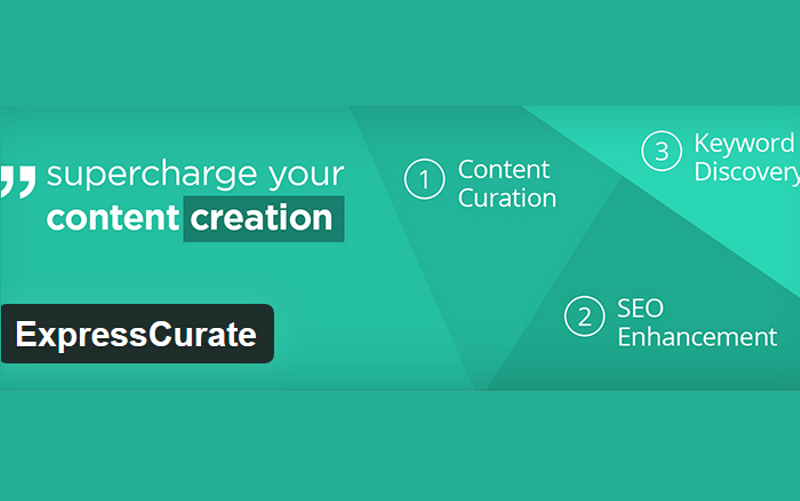Blogging has taken the internet by storm. It’s a fun way to share memories, promote professional expertise, and speak with the world at large. There are a number of blogging platforms that can be used to accomplish these needs, so let’s take a look at the best ones that are available right now and if they could be right for you.
1. WordPress
Having a blog on a WordPress platform covers every need that someone may have. Not only does the blog look instantly professional, but it can be included on hosting platforms through WordPress dashboards as well. Personal bloggers can individualize their platform to include coding support or just blog for free if they prefer. Anyone can get this blogging platform up and running in just minutes and begin promoting their brand.
The Pros of WordPress: It’s the easiest platform to use. You can use several different themes to customize your look. It’s infinitely adjustable with thousands of available plug-ins. It integrates well into existing hosting platforms.
The Cons of WordPress: It can be expensive to fully unlock the platform. It has constant updates. Since it’s widely used, most people can recognize that you’re using WordPress and if they don’t like the system, they won’t stick around for the blog.
2. Blogger
For many internet users, Blogger is the gold standard of platforms. Not only can you create a free blog in seconds, but you can easily access all of your blogs from one simple dashboard. Blogger also has the advantage of letting users adjust the coding for all standard templates. There are interactive templates that are more engaging, but are also much more difficult to edit. Although there aren’t many plug-ins that can be used [they’re called widgets on Blogger], you can put in customized social sharing with copy/paste code into the template.
The Pros of Blogger: You can sign up for a custom domain site while setting up your free blog for a competitive price. It’s able to be customized infinitely because the coding is accessible for most templates. Everything is unlocked immediately and there’s no paying for upgrades. You can even remove the Blogger branding from most of the site if you wish. It’s easy to begin affiliate programs, advertising, and other moneymaking options within an hour of setup for most beginners.
The Cons of Blogger: Some of the templates do not allow for editing whatsoever. The formats on Blogger are a bit dated. It can be difficult for beginners to change the fonts, headlines, and other appearance factors. AdWords advertising works the best with the platform, but not all users qualify for an AdWords account.
3. Tumblr
This blogging platform takes the best from social networking and puts it into the blogging world. Following blogs is easy and users get updates from their dashboard. Favorites can be bookmarked. Updating personal blogs happens directly on the site with a very easy-to-use interface. Multiple blogs can be run from the same dashboard and interacting with followers is pretty easy. This is the best blogging platform for those who want to communicate with Millennials as images, photographs, and sounds can all be easily shared. You can even link Facebook, SoundCloud, and other platforms into Tumblr for fast syndication of original materials.
The Pros of Tumblr: It’s completely free. There are dozens of free templates available and most custom templates are less than $40. You don’t need to know coding to change the dynamics of a blog, but access to the coding is available without cost to make individualized changes. Custom domain names are available and it’s easier to interact with followers through questions, instant messaging, and other methods of communication.
The Cons of Tumblr: Most posts must be limited to 200 words or less for people to interact with your brand or message. Accounts that focus on images or graphic design tend to do better than text-based blogs. The primary niche are teens and young adults, so brands that don’t have a footprint in this customer segment won’t be able to easily establish themselves. Many followers have thousands of blogs that they follow, so it is very easy for a message to get lost.
4. Quora
The website that started answer questions has also been one of the best blogging platforms since 2012. What makes this platform so useful is the fact that each blog post can be tagged so that it is searchable within the entire site’s database. It’s more of a niche site than a full blogging site, but it is a great place to showcase a personal writing talent of offer specific expertise that might get lost otherwise. The community is very supportive and will rapidly accept new content that is useful and engaging.
The Pros of Quora: It’s a great place for specific knowledge. People with specific knowledge can be found more quickly than on other platforms because of the tagging system. Community members often search through new blogs daily to learn something new.
The Cons of Quora: It is difficult to personalize a Quora blog. Every blog on the platform has a certain professional feeling to it, yet they also don’t feel 100% professional either. General knowledge blogs get lost in the shuffle since people search for specific tags and answers while on the site.
5. Svbtle
The average visitor to a website today wants to instantly get value. That’s what Svbtle is able to provide right from the very start. At first glance, looking at a Svbtle blog is reminiscent of a Blogger blog, but this platform takes it up to another notch for everyone – not just those who are coding geniuses. You can install an interactive image within the title of the blog. You can encourage people to read one specific article first, kind of like pinning a post to a Facebook page. Instead of having tons of links to navigate, you can quickly find specific contact info directly from the main page. It’s simple, elegant, and very easy to use.
The Pros of Svbtle: It works for any type of blog. Posting is simple and sharing or syndicating content is just a couple clicks away. Images have a top billing and adding secondary blog links to other sites is pretty easy to do. Follow-up articles are placed at the end of an article to further engage visitors. Kudos are pretty easy to leave.
The Cons of Svbtle: Not many people are using the platform. Search results are often reduced for these blogs because they aren’t always easily found. The blogs look fairly basic, so the quality of content becomes the #1 focus. If bloggers don’t 100% nail their content, then a bad first impression of the brand results and that can mean a total reduction of business.
6. Ghost
This blogging platform is fairly new to the internet and an early graduate of the success programs of Kickstarter. With $300k in crowdfunding cash, this platform isn’t free. It may cost a blogger up to $80 per month to run a single blog here, so it isn’t going to be for everyone. The benefit of paying for access, however, is that the blogs look like professional sites with only a few clicks of the mouse. Content is easy to access and is published in a news magazine design. The interactions are innovative, but they’re also pretty new so some visitors might need to get used to the platform to enjoy what is being published on it.
The Pros of Ghost: It speaks of innovation. The fresh looks help to automatically provide an extra layer of attention to the content. The dashboard for bloggers is also innovative and one of the best in the blogging industry today. The format is especially attractive to those who are pursuing entrepreneurial or small business opportunities.
The Cons of Ghost: Users have to pay for the domain name and they have to pay for the host. The system is designed for people who have been blogging for some time, so the posting and updating system might be a little overwhelming to those who are just setting up their blogs for the first time.
7. Squarespace
This is another pay-to-post platform that averages about $8 per month. It’s a good place for e-commerce blogs that are looking to make direct sales because the services and features are easy to manage. A 14 day free trial is often offered as well to try out the services to see if they’re worth the price.
The Pros of Squarespace: Cloud-based mainteance and hosting makes life easier for complicated platforms. The innovative designs are perfect for modern businesses that are looking for something that is scalable.
The Cons of Squarespace: Personal blogs don’t really work on this platform. If you have a massive audience for a personal blog, then maybe it’ll work. It’s mostly for businesses that are looking to grow.
The best blogging platforms all provide some unique strengths to specific users. Consider these top platforms today and then get to work creating the amazing content that will draw traffic in every day.








